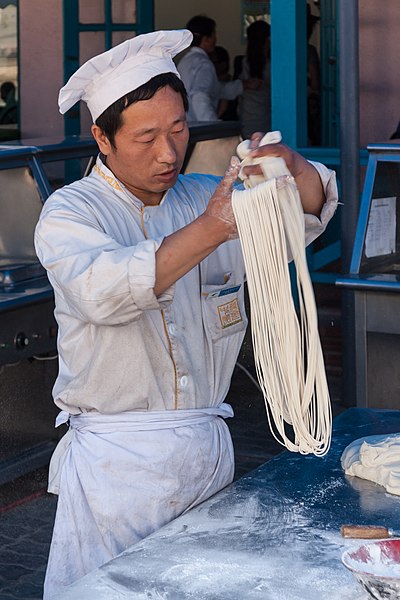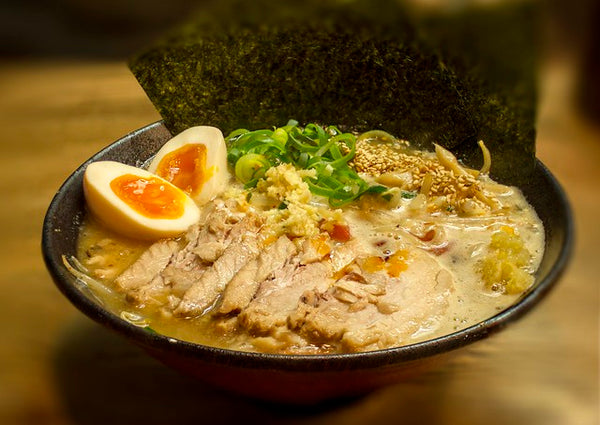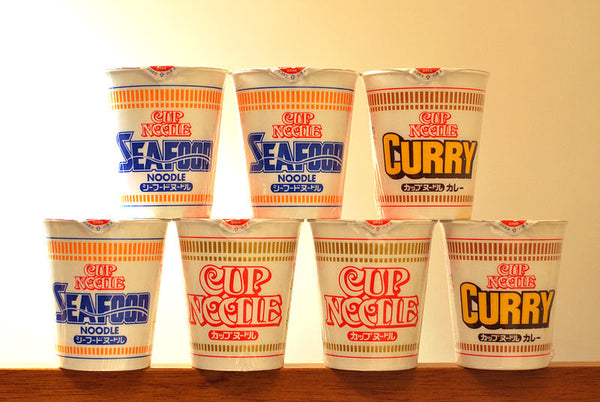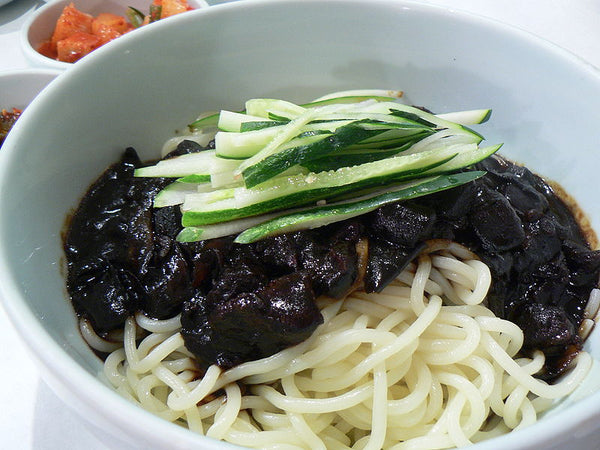
Long Life, Quick Eating, and Drowning Your Sorrows: 10 Tasty Tidbits on National Noodle Day
In case you haven’t noticed, we’re huge noodle fans, whether we’re hawking a variety of noodle wares or chowing down on a variety of mian around the city. So of course for National Noodle Day on Oct. 6, we're celebrating with some slurpable fun facts.
A bowl of 4,000-year-old noodles was found in China
Most historians agree that noodles originated from China, The oldest evidence to date was found in 2005 when archaeologists dug up a bowl of noodles they estimated to be 4,000 years old. They were found in the northwest province of Qinghai province and resembled lamian, a kind of very long, hand-pulled noodle that’s chewy in texture.
The longer the better in Chinese culture

Long noodles have much significance in Chinese culture. Representing a long life, they’re the must-eats on birthdays and during Lunar New Year. Any lengthy mian will do, but especially a dish called longevity noodles or yi mian, a kind of egg noodle that’s cooked al dente and therefore isn’t easily broken.
Their significance might not just have to do with its length
While it seems logical that noodles symbolize a long life due to their length, another legend says it may have to do a pun. It was believed that a long face meant longevity, and since the Chinese word for face, mian, sounds like the word for noodles, the two were equated.
The longest noodle measures more than 10,000 feet!
The record was set in Henan, China in 2017 and still has yet to be broken.
Ramen is considered a fast food in Japan

While it may take up to 18 hours to cook ramen broth, the idea in Japan is to eat it as quickly as possible. How quickly? Thirteen minutes is the average. It’s considered rude to the chef to not enjoy his or her dish when it’s at its freshest and hottest. So that means no getting up from the table after you’ve been served nor dawdling with the perfect Instagram shot.
The inventor of instant noodles had unique inspirations
Taiwan-born, Japanese-bred Momofuku Ando is widely considered the inventor of instant noodles. In 1958, at the age of 48, he introduced Chikin Ramen — but not before months of trial and error, trying to figure out the best way to preserve noodles for a long shelf life. It was while watching his wife cook tempura that inspiration hit: flash-frying the noodles would remove the moisture, just the way the tempura method did with shrimp and vegetables.

As for his other big invention, Cup Noodles, it was a trip to the U.S. that sparked that idea. Legend says he was meeting with an American grocery buyer when he wanted to demonstrate his noodles. However, no bowl or chopsticks were available so the buyer grabbed a Styrofoam coffee cup, broke the noodles in half, poured hot water over them, and ate them with a fork. The idea for Cup Noodles was born.
There’s a museum dedicated to instant noodles in Japan
With locations in Yokohama and Ikeda, Osaka, the Cup Noodles Museum offers a history of both Ando and the invention of instant noodles, a tasting room, and an “instant noodle tunnel.”
Taiwan celebrates noodles every year with a festival

While it may have been introduced to the yam-shaped island by those fleeing Sichuan province in China, beef noodle soup has become a quintessential Taiwanese dish. Every year a competition is held during the Taipei International Beef Noodle Festival to find the country’s best bowl of niu rou mian. This year’s 56 competitors ranged from street vendor to five-star restaurants, and even included actor armed with his mother’s recipe.
A popular Korean noodle dish has Chinese origins

Jajangmyeon, noodles with black bean sauce, is said to have been introduced in a invented by a Chinese immigrant in Korea. Introduced at a Chinese restaurant in South Korea’s only Chinatown, the dish was originally based on zhajiangmian, which originated from Shandong province (the inventor’s hometown). The original restaurant is now a museum.
Jajangmyeon is the signature dish for drowning your singlehood sorrows
South Korea, like Japan, celebrates Valentine’s Day not once but twice: the first time on the traditional western date of February 14, on which women give men gifts, then on March 14, dubbed White Day, on which men reciprocate.
But what about singletons? While China encourages those unattached to distract themselves with shopping, South Korea encourages 24 hours of wallowing with Black Day on April 14. According to the Smithsonian, those who went 0 for 2 in the gift department for both Valentine’s and White Days gather together dressed head to toe in black and eat, what else, noodles in black bean sauce, or jajangmyeon.
Have a craving for more morsels about Asian food? Check out our posts on sponge cakes, dumplings, and egg tarts.
[Images: "Dalian, Liaoning, China: Noodlemaker in Dalian Laohutan Ocean Park" by CEphoto, Uwe Aranas; CC BY 2.0 licenses: "Miso Ramen" by George N; "CUP NOODLE s" by Yumi Kimura; "Beef Noodle Soup 紅燒牛肉麵" by BlueJules; "Jajangmyeon" by Stu Spivak]
